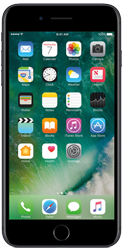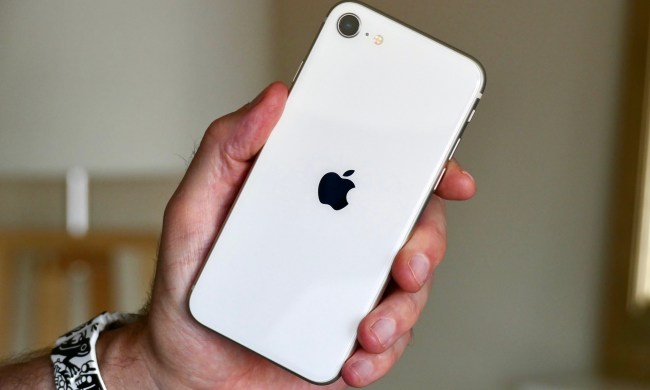
It’s been a while since we’ve seen a Nokia flagship in the smartphone market. After an ill-fated romance with Microsoft, the Finnish brand briefly disappeared from the mobile market altogether, but now it’s back. Though the name is under license to another company, HMD Global, Nokia still has guidelines in place HMD has to follow.
The current Nokia renaissance really started with the revamped Nokia 3310 which sent a clear signal that people still have a lot of love for the brand. HMD Global then tested the Android waters with the budget Nokia 6, Nokia 5, and Nokia 3. But the Nokia 8 is its first go at a premium Android smartphone with an attractive design, top specs, and a price tag to match. Can it compete with the aging iPhone 7? Let’s find out.
Note: Before we dig in, it’s only fair to tell you upfront that HMD currently has no plans to release the Nokia 8 in the U.S.
Specs
|
Nokia 8  |
Apple iPhone 7  |
|
| Size | 5.96 x 2.9 x 0.31 inches (151.5 x 73.7 x 7.9 mm) | 5.44 × 2.64 × 0.28 inches (138.3 × 67.1 × 7.1 mm) |
| Weight | 5.64 ounces (160 grams) | 4.87 ounces (138 grams) |
| Screen | 5.3-inch IPS LCD | 4.7-inch Retina HD LED-backlit widescreen |
| Resolution | 2,560 × 1,440 pixels | 1,334 × 750 pixels |
| OS | Android 7.1.1 Nougat | iOS 10 |
| Storage | 64GB | 32/128/256GB |
| MicroSD Card Slot | Yes | No |
| NFC support | Yes | Yes (Apple Pay Only) |
| Processor | Qualcomm Snapdragon 835 | Apple A10 Fusion with 64-bit architecture, M10 motion coprocessor |
| RAM | 4GB | 2GB |
| Connectivity | 4G LTE, 802.11a/b/g/n/ac Wi-Fi | 4G LTE, GSM, CDMA, HSPA+, 802.11ac/b/g/n/ac Wi-Fi |
| Camera | Dual 13MP rear with OIS, 13MP front | 12MP rear with OIS, 7MP front |
| Video | 4K at 30fps, 1080p at 30fps, | 4K at 30fps, 1080p at 30 or 60fps, 720p at 240fps |
| Bluetooth | Yes, version 5 | Yes, version 4.2 |
| Fingerprint sensor | Yes | Yes |
| Other sensors | Barometer, gyro, accelerometer, proximity sensor, compass, ambient light sensor | Barometer, 3-axis gyro, accelerometer, proximity sensor, ambient light sensor |
| Water Resistant | Yes, IP54 | Yes, IP67 |
| Battery | 3,090mAh | 1,960mAh |
| Charger | USB Type-C | Lightning |
| Quick Charging | Yes | No |
| Wireless Charging | No | No |
| Marketplace | Google Play Store | Apple App Store |
| Color offerings | Tempered Blue, Polished Blue, Steel, Polished Copper | Rose Gold, Gold, Silver, Black, Jet Black |
| Availability | Coming to Europe in September | AT&T, Verizon, Sprint, T-Mobile |
| Price | Starting at 600 euros (around $700) | $650 |
| DT Review | Coming soon | 3.5 out of 5 stars |
HMD Global certainly hasn’t cut any corners in the Nokia 8’s engine room, because it’s packing a Snapdragon 835 processor with 4GB of RAM, which is exactly what you’ll find in Android’s current crop of top performers, from the HTC U11 to the Samsung Galaxy S8.
It’s a powerful pairing that’s fast, efficient, and capable of handling anything you’re likely to throw at it. Any concerns you might have about the software user interface slowing things down can be set aside, because the Nokia 8 is running a pure version of Android straight from Google.
The iPhone 7 sports Apple’s quad-core 64-bit A10 Fusion processor, which we know is a solid performer. There’s only 2GB of RAM in the iPhone 7, but because the platform works differently, that doesn’t necessarily mean performance is any worse. How much RAM you need in your smartphone is still a topic of some debate.
You can get the iPhone 7 in 32, 128, and 256GB configurations, while the Nokia 8 comes with 64GB of onboard storage, however, the Nokia 8 also supports MicroSD card expansion.
We need some hands-on time with the Nokia 8 to confirm, but based on what we’ve seen from other phones with the same components, there won’t be a big difference between the Nokia 8 and iPhone 7 on the performance front.
Winner: Tie
Design, display, and durability

The Nokia 8 has nice curved edges and an aluminum unibody design that really shines if you opt for the glossy blue or copper colors, but HMD Global clearly didn’t get the bezel-less design memo, because there are chunky bezels at the top and bottom of the display. There’s also a fingerprint sensor on the front flanked by capacitive touch buttons. The dual camera module on the back is a lozenge shape with a metallic border. The antenna bands on the top and bottom edges spoil the look a little, but they’re a necessary evil if you want a signal. All in all, it’s a nice-looking phone.
Rumors abound that Apple has taken bold steps with the design of the iPhone 8 to maximize screen real estate, and there’s little doubt that, in the current smartphone crowd, the iPhone 7 is beginning to look a bit dated. Build quality is excellent, but the curved aluminum finish, broken by the antenna bands is very familiar by now, and there are big bezels around the screen.
Moving on to the display, the Nokia 8 walks it. The iPhone 7 sports a 4.7-inch screen with a 1334 x 750-pixel resolution, giving it a 326 ppi (pixel-per-inch) rating. The Nokia 8 has a bigger, 5.3-inch display with a 2560 x 1440-pixel resolution which scores a 554 ppi. Both are IPS LCD, but the Nokia 8 screen can go slightly brighter. In simple terms, the Nokia 8 screen is bigger, sharper, and generally better.
The iPhone 7 claws a little back in the durability stakes with an IP67 rating, which means it can handle a dunk in water, while the Nokia 8 is just splash proof with an IP54 rating. It’s not enough, though, to change the winner of this category.
Winner: Nokia 8
Battery life and charging

The Nokia 8 has a big battery rated at 3,090mAh, while the iPhone 7 gets by with a 1,960mAh battery. We would expect the Nokia 8 to have longer battery life, but Apple is adept at squeezing great performance from its hardware and the iPhone 7 has a smaller, lower resolution display to power, so there might not be as much in it as you’d think. We’ll have to see how the Nokia 8 does in real life before we can make a definitive call here.
Sadly, neither of these phones supports wireless charging, but one area where the Nokia 8 has an advantage is charging speed. With support for Qualcomm’s Quick Charge 3.0 technology, via the USB Type-C port, we expect the Nokia 8 to charge up a lot faster than the iPhone 7.
Winner: Nokia 8
Camera

One of the headline features for the Nokia 8 is the camera, which has been specially designed to support live-streaming to apps like Facebook Live. It can also stream from the front and rear camera simultaneously. That might sound a bit gimmicky, but if we just look at the camera hardware here, it’s tough not to be impressed.
The Nokia 8 has two 13-megapixel cameras on the back, each with f/2.0 apertures. One shoots in color and has OIS (optical image stabilization), the other is monochrome. The selfie camera is also rated at 13-megapixels with the same f/2.0 aperture.
By contrast, the iPhone 7 has a single 12-megapixel main camera with an f/1.8 aperture and OIS, backed by a 7-megapixel front-facing camera. The smaller f/1.8 number actually denotes a wider aperture, so it should be a little better in low light conditions, but there’s only one camera on the back. As we noted in our iPhone 7 review, Apple fans who want the best camera really should go for the iPhone 7 Plus, because it has that second 12-megapixel camera which allows 2x optical zoom and that cool bokeh effect.
It looks better on paper, but we’re reticent to call this one without taking some shots on the Nokia 8, so we’re going to mark as a tie for now.
Winner: Tie
Software
This is a tough category to pick a winner in because it really boils down to personal preference. If you’ve bought into Apple’s ecosystem already, then the iPhone 7 will give you a seamless experience. If you’re used to Android, then the Nokia 8 will suit you better. Truthfully, both platforms are excellent and sport all the features you need in a smartphone. You get more customization options with Android, but iOS has an extra sheen of polish.
We’re delighted to find that the Nokia 8 runs stock Android and the latest Nougat 7.1.1 flavor. We have also heard that HMD is already working on bringing the upcoming Android O update to the phone. On the other hand, the iPhone 7 is sure to continue getting iOS updates on release day for the foreseeable future.
Winner: Tie
Price and availability
This is where the Nokia 8 falls flat on its face, at least for people living in North America. The price is fairly high at 600 euros (around $700), and there are no plans to release the Nokia 8 stateside. It will go on sale in Europe and a few other markets from September, but don’t expect to see it on sale in the U.S.
The iPhone 7 costs $650 for the 32GB, $750 for the 128GB, and $850 for the 256GB model. It can be bought through the Apple Store, either online or in a retail store. You can also pick it up at all the major carriers in the U.S. and spread your cost with a monthly contract.
Winner: iPhone 7
Overall winner: Nokia 8
The design and software are going to come down to personal preference, but in most other respects the Nokia 8 is a superior device, at least at first glance. It has a better display, more power, and an interesting set of cameras. We need hands-on time to really put it through its paces, but on paper it’s a better phone than the iPhone 7. It’s worth remembering that the iPhone 7 is almost a year old, so if you’re really hankering for an Apple device, you should wait and see what the iPhone 8 has to offer.



